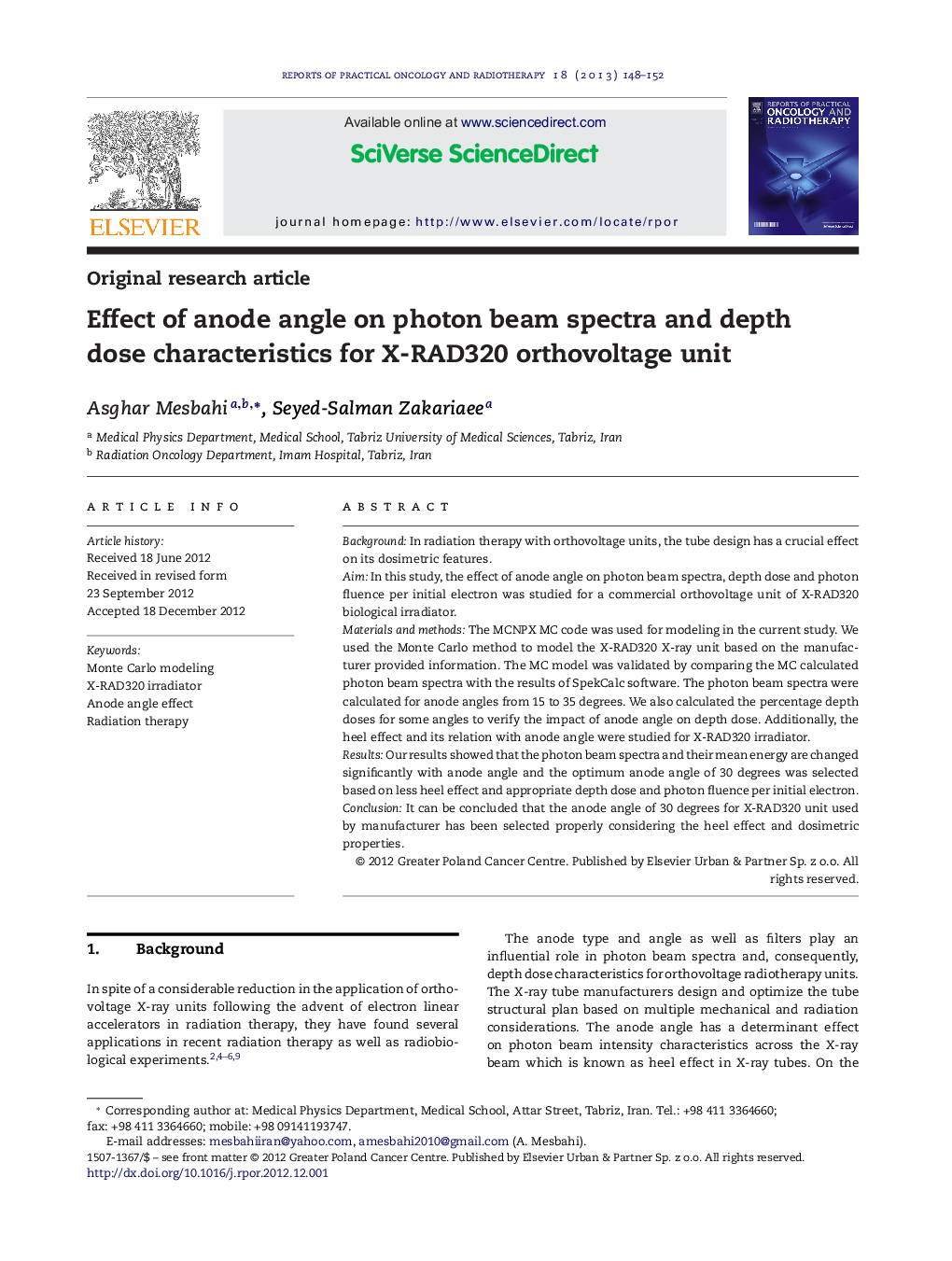| Article ID | Journal | Published Year | Pages | File Type |
|---|---|---|---|---|
| 1855683 | Reports of Practical Oncology & Radiotherapy | 2013 | 5 Pages |
BackgroundIn radiation therapy with orthovoltage units, the tube design has a crucial effect on its dosimetric features.AimIn this study, the effect of anode angle on photon beam spectra, depth dose and photon fluence per initial electron was studied for a commercial orthovoltage unit of X-RAD320 biological irradiator.Materials and methodsThe MCNPX MC code was used for modeling in the current study. We used the Monte Carlo method to model the X-RAD320 X-ray unit based on the manufacturer provided information. The MC model was validated by comparing the MC calculated photon beam spectra with the results of SpekCalc software. The photon beam spectra were calculated for anode angles from 15 to 35 degrees. We also calculated the percentage depth doses for some angles to verify the impact of anode angle on depth dose. Additionally, the heel effect and its relation with anode angle were studied for X-RAD320 irradiator.ResultsOur results showed that the photon beam spectra and their mean energy are changed significantly with anode angle and the optimum anode angle of 30 degrees was selected based on less heel effect and appropriate depth dose and photon fluence per initial electron.ConclusionIt can be concluded that the anode angle of 30 degrees for X-RAD320 unit used by manufacturer has been selected properly considering the heel effect and dosimetric properties.
